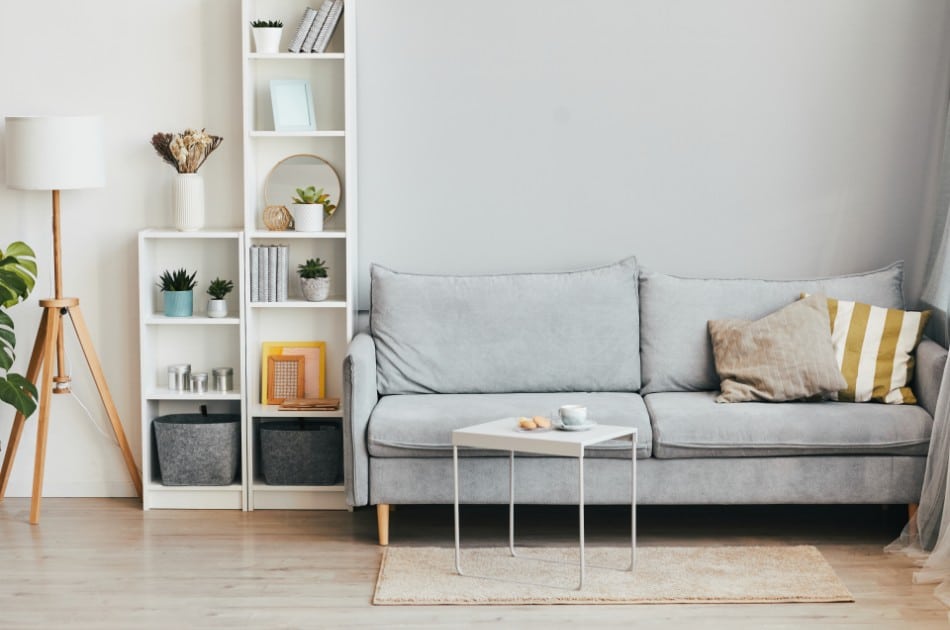Interior Designer vs. Interior Decorator: What’s the Difference?
An interior designer and interior decorator sound like they would have a really similar job, right? If you’re like most people, you may even think each title is just a synonym describing the same role. However, interior designers and interior decorators perform two very different roles, and they each have different education, credentials, and job duties. In fact, if you’re in the market to hire an interior designer to spruce up the appearance of your home, you may find you actually need an interior decorator (and vice versa).
So, what are the key differences between an interior designer vs. interior decorator? In this post, we’ll dive deep into the roles, responsibilities, and training for each position, so you can ensure you hire the right person for the job.
Interior Designers: Roles & Responsibilities

An interior designer plans interior layouts by implementing creative and technical solutions.
They create functional spaces that are beautiful and useable by studying the client’s work and living space and applying a systematic and coordinated methodology to satisfy their needs. They also work with room layouts and the placement of HVAC, plumbing, electrical, and other functional changes. Interior designers are essentially the architect of the home’s interior.
Education
Interior design requires formal training and education—usually, a two-year or four-year program (40 semester hours or 60 quarter hours) from an accredited university.
During their education, interior designers will learn about furniture design, architecture, space planning, drawing, computer-aided design training, and more. Many interior designers will also complete an internship with an established designer or design firm before taking on their own clientele.
Credentials
While no state requires a license or certification to do interior design, the American Society of Interior Designers (ASID) does specify requirements for how to qualify as an interior designer vs. an interior decorator. These requirements include passing an exam administered by the National Council for Interior Design Qualifications (NCIDQ) to demonstrate proficiency in design principles, like space planning and structural planning, earning enough credit hours through an accredited university, and collecting additional hours of interior design education every few years.
Some interior designers may undergo more formal education, credentialing, and certification from other industry associations to set them apart from other industry professionals. These include Council for Interior Design Accreditation (CIDA), Interior Design Continuing Education Council (IDCEC), and the American Lighting Specialist (ALA).
Job Duties
An interior designer evaluates a client’s work or lifestyle needs to create interior spaces that are physically, socially, and aesthetically functional. During an interior design project, a designer will use technology to create a virtual plan for the interior space and then work closely with an architect or construction team to implement the design.
While they may have an artistic eye, more importantly, an interior designer researches and adheres to building codes and regulatory requirements, encouraging environmental sustainability. They also have a strong understanding of how structural changes and decorative details can work together. When hiring an interior designer, it’s wise to look for someone who is also well-versed in interior decorating and can help you embellish interior spaces after the structural work is complete.
Who Does an Interior Designer Work With?
Many interior designers work closely with architects, contractors, construction teams, and developers to create design plans for the client. They may also work directly with the clients (either homeowners or business managers) during the interior designing process.
Interior Decorators: Roles & Responsibilities

An interior decorator embellishes an existing space with decorative elements. Unlike designers, they do not work with architects to create new spaces. Instead, a decorator beautifies the current space with new furniture styles, color schemes, window treatments, wall art, and other decorative elements.
Education
There is no standardized education or formal training program to become an interior decorator. Many interior decorators have a bachelor’s degree in a related field, like Fashion Design or Interior Design, or turn their hobby or passion for interior decorating into a career.
Credentials
There is no credentialing required to professionally practice interior decoration. However, there are organizations, like Certified Interior Decorators International (CID), that offer coursework on the design process, furniture styles, color schemes, and more specialized skills that interior decorators can take to receive certification to authenticate their training.
Job Duties
Interior decorators help their clients decide on a design style and color scheme, and they purchase furniture and accessories needed to spruce up an existing space. They do not make structural modifications to a room, like removing walls or rerouting electrical wiring—these are job duties that an interior designer would complete.
Who Does an Interior Decorator Work With?
A decorator usually works directly with the homeowner or business manager (as opposed to architects, construction managers, etc.). However, unlike designers, decorators may also work with furniture makers, painters, and other contractors and industry professionals who can help them bring their vision for the space to life.
Interior Designer vs. Interior Decorator: Which of These Two Professions Is Most Helpful to You?

Now that you know the main difference between an interior decorator and a designer, you can better determine which professional suits your unique needs for your home or business.
Here’s the bottom line: If you need to make structural changes, like removing a wall, relocating electrical or plumbing, or adding new windows and doors—an interior designer is probably your best bet. However, if you’d like to focus primarily on giving your space a refresh with new paint, flooring, or furnishings, an interior decorator will be able to help.If you need an interior decorator, our team at THE STAGING COMPANY would be happy to help you give your space a brand-new look. We offer interior decorating services for homeowners, builders, and businesses in East Texas and Florida. Learn more about our interior decorating services, and reach out to our team when you’re ready to get started!

